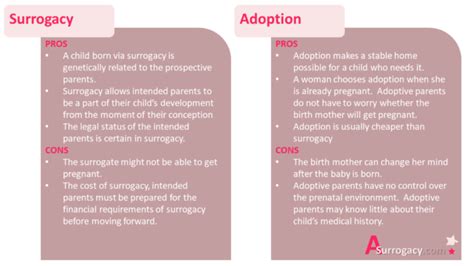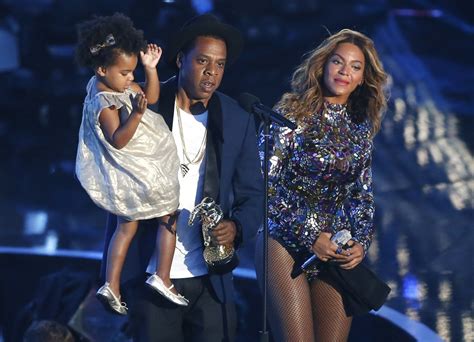
Benny Blanco’s recent comments about wanting children but not a wife have sparked a wider conversation about the diverse paths people take to parenthood, including adoption and surrogacy, highlighting the evolving landscape of family building in modern society.
The remarks made by music producer Benny Blanco on a recent episode of Bill Maher’s “Club Random” podcast, where he expressed a desire to have children without necessarily having a wife, have ignited a significant discussion about the various ways individuals and couples are choosing to become parents today. Blanco’s statement, which some perceived as unconventional, opened up a dialogue about adoption, surrogacy, and other non-traditional family structures that are increasingly becoming mainstream. The conversation underscores a shift in societal norms and attitudes towards parenthood, reflecting a more inclusive and diverse understanding of what constitutes a family. This evolving perspective acknowledges and celebrates the many different routes individuals and couples take to fulfill their dreams of having children. The dialogue also brings attention to the legal, ethical, and emotional considerations surrounding these alternative paths to parenthood.
Blanco’s specific words, “I want kids so bad, but I don’t want a wife,” were a catalyst for widespread commentary and debate. While some criticized his viewpoint as dismissive of marriage, others defended his right to choose a family structure that aligns with his personal values and preferences. This debate underscores the tension between traditional expectations and the growing acceptance of alternative family models. Blanco’s situation is not unique; many individuals share the desire to become parents without necessarily adhering to the traditional model of marriage first. This desire is fueling the exploration and utilization of alternative methods of family creation, such as adoption, surrogacy, co-parenting, and sperm or egg donation. The increased visibility of these options is challenging traditional notions of family and prompting a broader societal discussion about what it means to be a parent in the 21st century.
Adoption: Providing Homes and Hearts
Adoption has long been a path to parenthood for individuals and couples unable to conceive biologically or who wish to provide a home for children in need. The process involves legally transferring parental rights from the biological parents to the adoptive parents. Adoption can occur through various avenues, including public adoption agencies, private adoption agencies, and international adoption. Each type presents unique challenges and opportunities. Public adoption often involves children in foster care who are waiting for permanent homes. Private adoption typically involves infants or young children whose biological parents have chosen to relinquish their parental rights. International adoption involves adopting children from other countries, which can be a complex process involving international laws and regulations.
The decision to adopt is often driven by a deep desire to nurture and raise a child, regardless of biological connection. Adoptive parents undergo a rigorous screening process, including background checks, home studies, and interviews, to ensure they are capable of providing a safe and loving environment. The emotional journey of adoption can be profound, both for the adoptive parents and the adopted child. Building a bond and establishing a sense of belonging can take time and require patience, understanding, and unconditional love. Adoptive families often face unique challenges, such as helping the child navigate their identity and understand their adoption story. Support groups and counseling services can provide valuable resources for adoptive families as they navigate these challenges. The legal and financial aspects of adoption can also be significant, requiring careful planning and preparation. Despite these challenges, adoption offers a rewarding path to parenthood, creating families and providing children with the opportunity to thrive in a stable and supportive environment.
The landscape of adoption is evolving, with increasing emphasis on open adoption, where the adoptive family maintains some level of contact with the biological parents. This approach aims to provide the child with a better understanding of their origins and a connection to their biological family. Open adoption can benefit all parties involved, fostering a sense of transparency and cooperation. However, it also requires careful consideration and clear communication to ensure the child’s best interests are always prioritized. The rise of open adoption reflects a broader trend towards greater openness and honesty in adoption practices, acknowledging the importance of a child’s connection to their biological roots.
Surrogacy: A Collaborative Journey
Surrogacy is another increasingly popular option for individuals and couples who are unable to carry a pregnancy to term or who do not have a female partner. Surrogacy involves a woman carrying a pregnancy for another person or couple, with the intention of relinquishing the child to them after birth. There are two main types of surrogacy: gestational surrogacy and traditional surrogacy. Gestational surrogacy involves using the intended mother’s egg or a donor egg, which is fertilized with the intended father’s sperm or donor sperm, and then implanted in the surrogate’s uterus. In this case, the surrogate has no genetic connection to the child. Traditional surrogacy, on the other hand, involves using the surrogate’s own egg, which is fertilized with the intended father’s sperm. In this case, the surrogate is the biological mother of the child.
Gestational surrogacy is the more common and legally straightforward type of surrogacy, as it avoids the ethical and legal complexities associated with the surrogate being genetically related to the child. Surrogacy arrangements typically involve a legal contract that outlines the rights and responsibilities of all parties involved, including the intended parents and the surrogate. The contract addresses issues such as medical procedures, compensation, and parental rights. Surrogacy laws vary widely across different jurisdictions, with some countries and states having strict regulations or even prohibiting surrogacy altogether. It is essential for intended parents and surrogates to seek legal counsel to ensure they are fully aware of the legal implications of surrogacy in their jurisdiction.
The surrogacy process involves a significant emotional and physical commitment from both the intended parents and the surrogate. Intended parents often undergo extensive medical evaluations and fertility treatments to prepare for the embryo transfer. The surrogate undergoes medical screenings and hormone treatments to prepare her body for pregnancy. The pregnancy itself is closely monitored by medical professionals to ensure the health and well-being of both the surrogate and the developing fetus. The emotional bond between the intended parents and the surrogate can be profound, with many surrogacy arrangements evolving into lifelong friendships. However, it is also important to establish clear boundaries and expectations from the outset to avoid potential conflicts or misunderstandings.
The ethical considerations surrounding surrogacy are complex and often debated. Concerns are raised about the potential exploitation of surrogates, particularly in cases where surrogates are from lower socioeconomic backgrounds. Advocates for surrogacy emphasize the importance of ensuring that surrogates are fully informed, compensated fairly, and have the right to make their own decisions throughout the process. They argue that surrogacy can be a mutually beneficial arrangement that allows individuals and couples to fulfill their dreams of parenthood while empowering women to make choices about their reproductive health. The debate over surrogacy highlights the tension between individual autonomy and the need to protect vulnerable individuals from exploitation. As surrogacy becomes more common, it is essential to continue to engage in thoughtful and ethical discussions about its implications.
Other Paths to Parenthood: Co-Parenting and Beyond
Beyond adoption and surrogacy, other paths to parenthood are gaining recognition and acceptance. Co-parenting, for example, involves two or more individuals who are not in a romantic relationship deciding to raise a child together. This arrangement can be particularly appealing to individuals who desire parenthood but do not wish to be in a traditional relationship. Co-parenting requires clear communication, mutual respect, and a shared commitment to the child’s well-being. Legal agreements can help to define the rights and responsibilities of each parent, addressing issues such as custody, visitation, and financial support. Co-parenting can be a successful and fulfilling way to raise children, providing them with a stable and loving environment despite the absence of a traditional family structure.
Sperm and egg donation are also increasingly common options for individuals and couples who are unable to conceive using their own gametes. Sperm donation involves a man donating his sperm to help a woman conceive, either through artificial insemination or in vitro fertilization (IVF). Egg donation involves a woman donating her eggs to help another woman conceive through IVF. Sperm and egg donation can be anonymous or known, depending on the preferences of the parties involved. Many fertility clinics offer sperm and egg donation services, providing comprehensive screening and counseling to donors and recipients. The use of donor gametes raises ethical and legal considerations, such as the rights of the donor and the child’s right to know their genetic origins. Regulations regarding sperm and egg donation vary across different jurisdictions, reflecting the ongoing debate about these issues.
Single parenthood by choice is another growing trend, with more individuals choosing to become parents on their own, without a partner. Single parents by choice may conceive through sperm donation or adoption, or they may choose to raise a child from a previous relationship on their own. Single parenthood can be challenging, requiring significant emotional, financial, and logistical resources. However, it can also be incredibly rewarding, providing single parents with the opportunity to build a unique and fulfilling family life. Support networks, such as friends, family, and single-parent groups, can provide valuable assistance and companionship. The rise of single parenthood reflects a shift in societal attitudes towards family structure, with increasing recognition and acceptance of diverse family models.
The Evolving Landscape of Family
Benny Blanco’s comments, while seemingly simple, have tapped into a broader cultural shift towards greater acceptance of diverse family structures and alternative paths to parenthood. The traditional model of a nuclear family, consisting of a married heterosexual couple and their biological children, is no longer the only accepted or desired model. Many individuals and couples are choosing to create families in ways that align with their personal values, preferences, and circumstances. This shift is driven by a variety of factors, including changing social norms, advances in reproductive technology, and increasing recognition of LGBTQ+ rights.
The media plays a significant role in shaping public perceptions of family. By showcasing diverse family structures and alternative paths to parenthood, the media can help to normalize these options and reduce stigma. Celebrities who openly discuss their experiences with adoption, surrogacy, or other non-traditional family models can have a powerful impact on public opinion. Their stories can inspire others to consider these options and can help to break down misconceptions and stereotypes. The increased visibility of diverse families in the media reflects a broader societal trend towards greater inclusivity and acceptance.
The legal system is also adapting to the evolving landscape of family. Laws regarding adoption, surrogacy, and parental rights are being updated to reflect the changing realities of family life. Courts are increasingly recognizing the rights of same-sex parents, single parents, and co-parents. However, legal challenges remain, particularly in areas such as international surrogacy and the recognition of parental rights across state lines. Continued legal reform is needed to ensure that all families are treated fairly and equally under the law. The legal system plays a critical role in protecting the rights and interests of children and parents in diverse family structures.
The increasing acceptance of diverse family structures is not without its challenges. Some individuals and groups continue to advocate for traditional family values, viewing alternative family models as a threat to societal stability. Debates over issues such as same-sex marriage, surrogacy, and adoption often reflect underlying cultural and religious beliefs about family and morality. These debates can be divisive and polarizing, highlighting the need for respectful dialogue and understanding. The ongoing discussion about family values underscores the importance of recognizing and valuing the diversity of family structures in modern society.
Ultimately, the path to parenthood is a personal journey, and there is no one-size-fits-all approach. What matters most is that children are raised in a loving, stable, and supportive environment. Whether a family is formed through adoption, surrogacy, co-parenting, or other means, the key is to prioritize the well-being and happiness of the child. As societal attitudes continue to evolve, it is essential to embrace diversity and celebrate the many different ways families are created and nurtured. Benny Blanco’s comments have sparked a valuable conversation about these issues, prompting us to reconsider our assumptions about family and to embrace the evolving landscape of parenthood.
Frequently Asked Questions (FAQs)
-
What prompted the discussion about alternative paths to parenthood?
- Benny Blanco’s comments on a podcast about wanting children but not a wife sparked a widespread conversation about the diverse ways individuals and couples are choosing to become parents, including adoption, surrogacy, and co-parenting.
-
What are the main types of adoption available?
- Adoption can occur through public adoption agencies (involving children in foster care), private adoption agencies (typically involving infants or young children), and international adoption (adopting children from other countries).
-
What is the difference between gestational and traditional surrogacy?
- Gestational surrogacy involves using the intended mother’s egg or a donor egg, which is fertilized and implanted in the surrogate’s uterus, meaning the surrogate has no genetic connection to the child. Traditional surrogacy involves using the surrogate’s own egg, which is fertilized with the intended father’s sperm, making the surrogate the biological mother of the child.
-
What are some ethical considerations surrounding surrogacy?
- Ethical concerns include the potential exploitation of surrogates, particularly those from lower socioeconomic backgrounds, and the need to ensure that surrogates are fully informed, compensated fairly, and have the right to make their own decisions throughout the process.
-
What are some alternative paths to parenthood besides adoption and surrogacy?
- Alternative paths include co-parenting (raising a child with someone you are not in a romantic relationship with), sperm and egg donation, and single parenthood by choice.
-
What factors contribute to the evolving landscape of family structures?
- Changing social norms, advances in reproductive technology, increasing recognition of LGBTQ+ rights, and media representation of diverse families all contribute to the evolving landscape of family structures.
-
How does the legal system adapt to the changing realities of family life?
- Laws regarding adoption, surrogacy, and parental rights are being updated to reflect the changing realities of family life. Courts are increasingly recognizing the rights of same-sex parents, single parents, and co-parents.
-
What challenges still exist in the acceptance of diverse family structures?
- Some individuals and groups continue to advocate for traditional family values, viewing alternative family models as a threat to societal stability. Debates over issues such as same-sex marriage, surrogacy, and adoption often reflect underlying cultural and religious beliefs.
-
What is the most important factor in raising children, regardless of family structure?
- What matters most is that children are raised in a loving, stable, and supportive environment.
-
How can the media play a role in shaping public perceptions of family?
- By showcasing diverse family structures and alternative paths to parenthood, the media can help to normalize these options and reduce stigma. Celebrities who openly discuss their experiences can also have a powerful impact on public opinion.
-
What role do legal agreements play in co-parenting arrangements?
- Legal agreements help to define the rights and responsibilities of each parent, addressing issues such as custody, visitation, and financial support, ensuring clarity and stability for the child.
-
Why is it important to have open adoption practices?
- Open adoption aims to provide the child with a better understanding of their origins and a connection to their biological family, fostering transparency and cooperation, and acknowledging the importance of a child’s connection to their biological roots.
-
What are the typical steps involved in the adoption process?
- The adoption process involves a rigorous screening process, including background checks, home studies, and interviews, to ensure adoptive parents are capable of providing a safe and loving environment.
-
How does surrogacy impact the intended parents and the surrogate emotionally?
- Surrogacy involves a significant emotional commitment from both the intended parents and the surrogate. The emotional bond between them can be profound, often evolving into lifelong friendships, requiring clear boundaries and expectations to avoid misunderstandings.
-
What are the different ways a single person can become a parent by choice?
- Single parents by choice may conceive through sperm donation or adoption, or they may choose to raise a child from a previous relationship on their own, requiring significant emotional, financial, and logistical resources.
-
What legal considerations should be taken into account when using sperm or egg donation?
- Legal considerations include the rights of the donor and the child’s right to know their genetic origins. Regulations regarding sperm and egg donation vary across different jurisdictions, reflecting the ongoing debate about these issues.
-
What are some of the challenges faced by adoptive families?
- Challenges include helping the child navigate their identity and understand their adoption story, which requires patience, understanding, and unconditional love. Support groups and counseling services can provide valuable resources.
-
What are the advantages of using gestational surrogacy over traditional surrogacy?
- Gestational surrogacy is the more common and legally straightforward type of surrogacy because it avoids the ethical and legal complexities associated with the surrogate being genetically related to the child.
-
How can support networks help single parents by choice?
- Support networks, such as friends, family, and single-parent groups, can provide valuable assistance and companionship, helping to alleviate the emotional, financial, and logistical challenges of single parenthood.
-
Why is ongoing legal reform needed to support diverse families?
- Continued legal reform is needed to ensure that all families are treated fairly and equally under the law, protecting the rights and interests of children and parents in diverse family structures, and adapting to the changing realities of family life.








